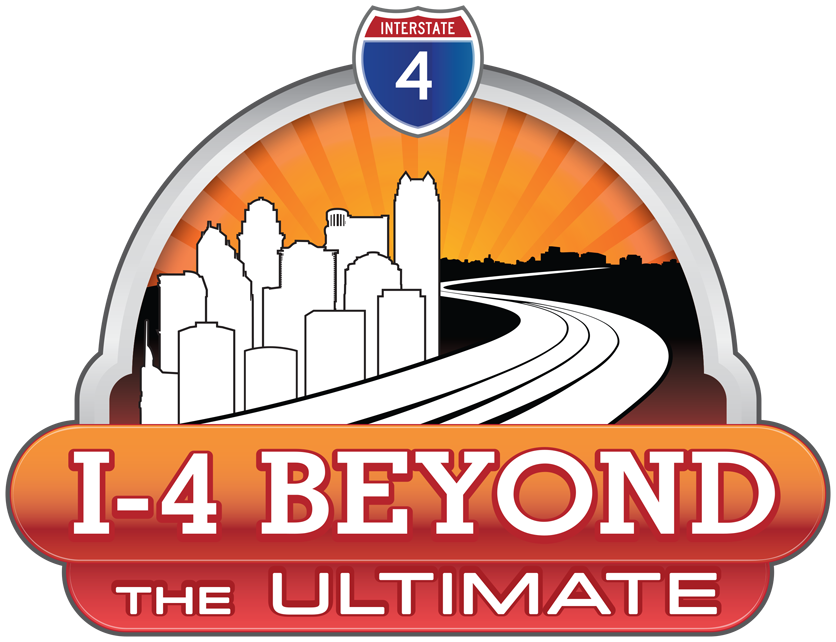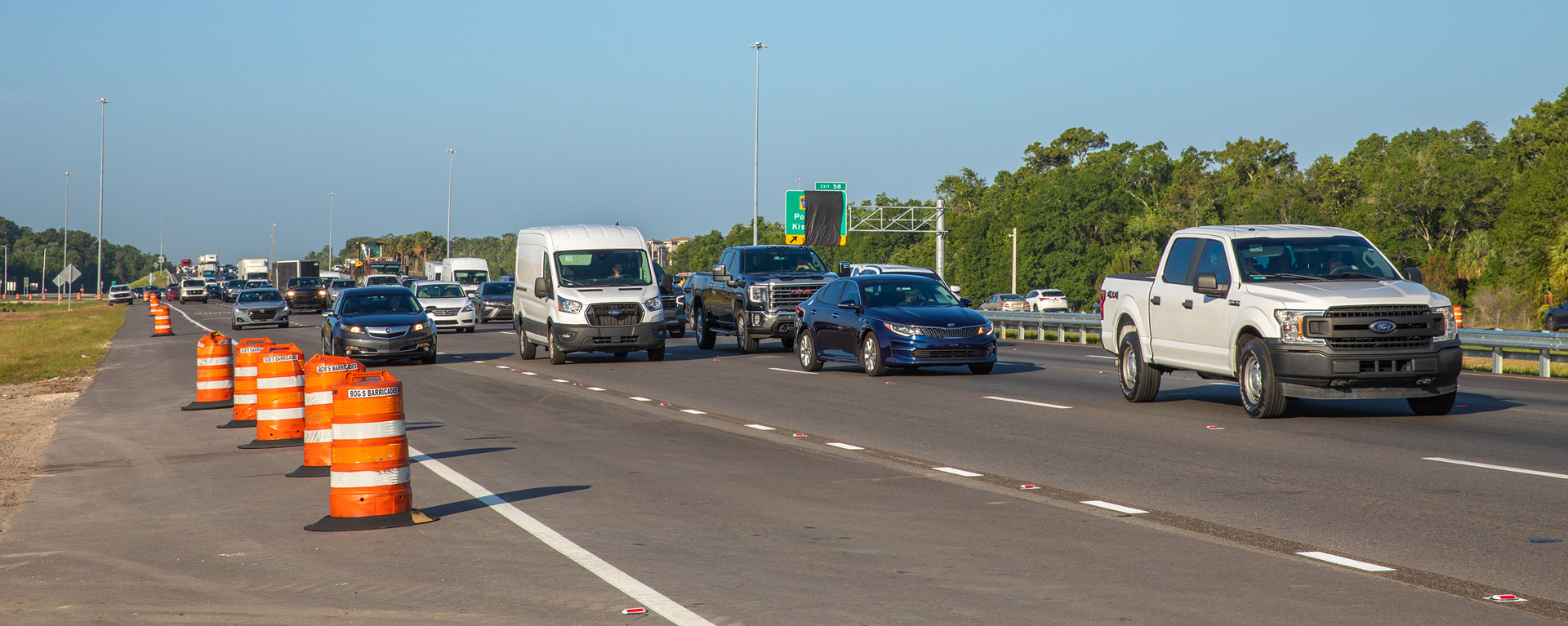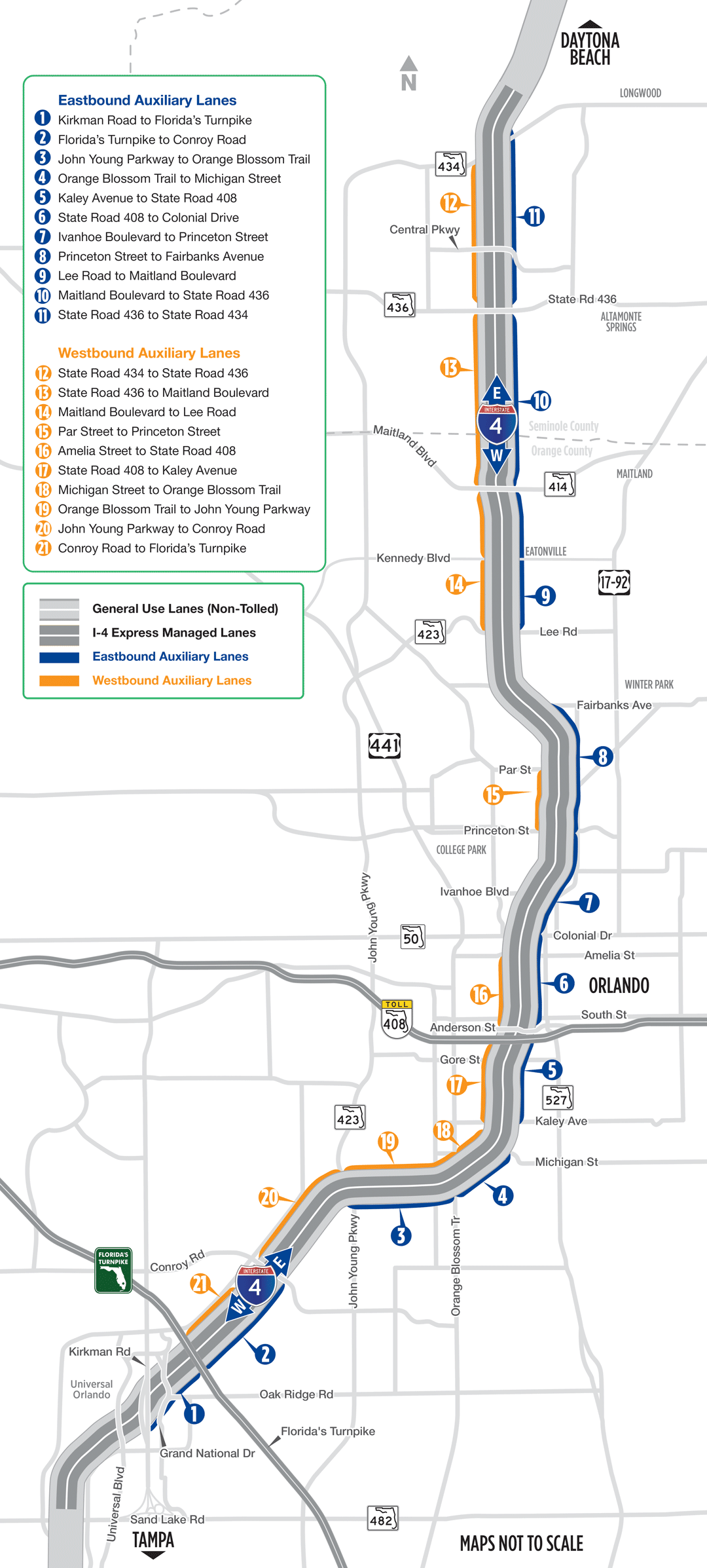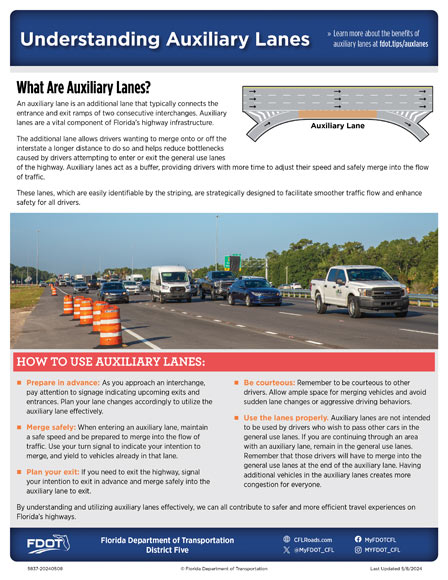To accommodate the increasing number of visitors and residents coming to Central Florida over the past several years, the Florida Department of Transportation (FDOT) has made improvements on Interstate 4 (I-4) designed to increase capacity and improve traffic flow. One such improvement as part of the I-4 Beyond the Ultimate project has been the addition of auxiliary lanes along I-4 in multiple project areas. Auxiliary lanes are an important part of improving safety on I-4, but how motorists use them determines how effective they are in making I-4 safer and more efficient.
An auxiliary lane is an extra lane typically connecting the entrance and exit ramps of two consecutive interchanges. The additional lane allows drivers more room to merge onto or off the interstate, improving safety. If used properly, auxiliary lanes reduce bottlenecks caused by drivers attempting to enter or exit the interstate.
Auxiliary lanes are not meant for through traffic to use as travel lanes. Drivers should avoid using an auxiliary lane for passing. Although there may be times when it appears that traffic is moving faster in an auxiliary lane during busy periods, vehicles that leave the general use lanes to use an auxiliary lane for passing purposes will need to merge back into the general use lanes if they are not exiting the highway. This can lead to slower travel times for motorists in the general use lanes and create more congestion for those entering I-4.
Auxiliary lanes have been constructed as part of several I-4 Beyond the Ultimate projects. These include:
- A new auxiliary lane on westbound I-4 between State Road (S.R.) 429 and County Road (C.R.) 532 at ChampionsGate.
- A new auxiliary lane on eastbound I-4 between C.R. 532 and S.R. 429.
- A new auxiliary lane on northbound S.R. 429 to Sinclair Road.
- An auxiliary lane was added to eastbound I-4 from the end of I-4 Ultimate to Lake Mary Boulevard as part of the E.E. Williamson bridge replacement project, which was completed in May 2020.
In addition, the I-4 Beyond the Ultimate area includes an auxiliary lane on westbound I-4 between C.R. 46A and Lake Mary Boulevard and an extended auxiliary lane on the westbound I-4 entrance ramp from Lake Mary Boulevard.
FDOT encourages motorists — particularly during periods of heavier traffic such as during morning and afternoon commute hours — to remain in the general use lanes until they are ready to exit






Social Media